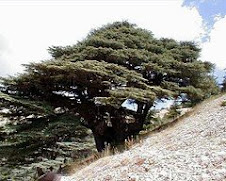
The following article is from NOLA.com:
Storm surge tests Industrial Canal floodwalls
by The Times-Picayune
Monday September 01, 2008, 5:37 PM
Although New Orleans escaped serious damage from Hurricane Gustav on Monday morning, winds of the Category 2 storm pushed a 12-foot storm surge into the Industrial Canal, sending waves sloshing over the western wall and triggering minor flooding in the Upper 9th Ward.
Gustav's landing point was 72 miles away near Cocodrie, a low-lying fishing community in Cajun country. Cocodrie is about 20 miles from Port Fourchon, a vital hub in the energy industry where huge amounts of oil and gas are sent inward via pipelines to refineries. There had been fears of extensive damage.
Although Gustav went ashore as a Category 2 hurricane, it weakened to a Category 1 storm by early afternoon.
By mid morning, water was splashing for several hundred yards over the western side of the Industrial Canal's floodwall near North Claiborne Avenue, said Jerry Sneed, New Orleans' director of homeland security and emergency preparedness.
The incident doesn't pose a major threat, Army Corps of Engineers officials said. Water levels had dropped 2 to 3 feet by mid afternoon near the Claiborne Avenue bridge, New Orleans police reported.
But after lower water levels were reported, other witnesses said waves continued to spill over the west floodwall at Florida Avenue, closer to the lake and near the junction with the Gulf Intracoastal Waterway.
There was no apparent problem with the wall on the canal's eastern side. It was built stronger and 2 feet higher than the wall on the west side after Hurricane Katrina.
The walls are considered an integral part of the plan to protect the area from flooding caused by a "100 year" hurricane storm surge, a term meaning that the storm has a 1-in-100 chance of occurring in any year.
An emergency response plan is ready should part of the wall fail, Corps of Engineers officials said.
The Corps has available on short notice six barges filled with rock and several hundred filled sandbags, each of them the size of a car. The sandbags would be dropped by large helicopters. But weather conditions would have to be good enough to allow the helicopters to fly, officials said.
"If something cracked, you would try to patch it. If something big happened, like the breach at 17th (Street Canal during Katrina), Black Hawks would fling the sandbags," said Capt. Jason Royston of the Corps' emergency operations center. "We have contingency plans in place, but the plan used depends on the assessment."
On Monday, the spillage was landing on cement pads, which reduce its impact at the base of the wall.
"We're confident in the stability of that wall," which was fortified after Hurricane Katrina, said Karen Durham-Aguilera, director of Task Force Hope for the Corps.
Although water was splashing over the wall, "it is not a breach," she said.
Federal officials said the high-water threat along canal walls would not have been as great, except for an obstruction caused by a lowered railroad bridge over the canal.
Chris Bonura, spokesman for the Port of New Orleans, said the L&N Railroad bridge, also called the Almonaster railroad bridge, was lowered because it cannot withstand hurricane force winds. The controls for the bridge were underwater on Monday morning.
There were no signs of seepage on the eastern side of the canal near the Danziger Bridge.
Nevertheless, Col. David Gooch of the Louisiana National Guard said the guard would evacuate anyone who feared the wall will give way.
"Obviously, there's an interest in getting people out of there as soon as possible,'' he said, adding that people who want out of the area can flag down Guardsmen in the trucks.
Corps officials are posted in bunkers and pump stations near the Industrial Canal and will continue to assess the health of the floodwall, Durham-Aguilera said.
Staff writers Frank Donze, Sheila Grissett, Laura Maggi and Gordon Russell contributed to this story.
Back to work links:
Wind Energy Stocks, windpower investing
A Green realtor website



No comments:
Post a Comment